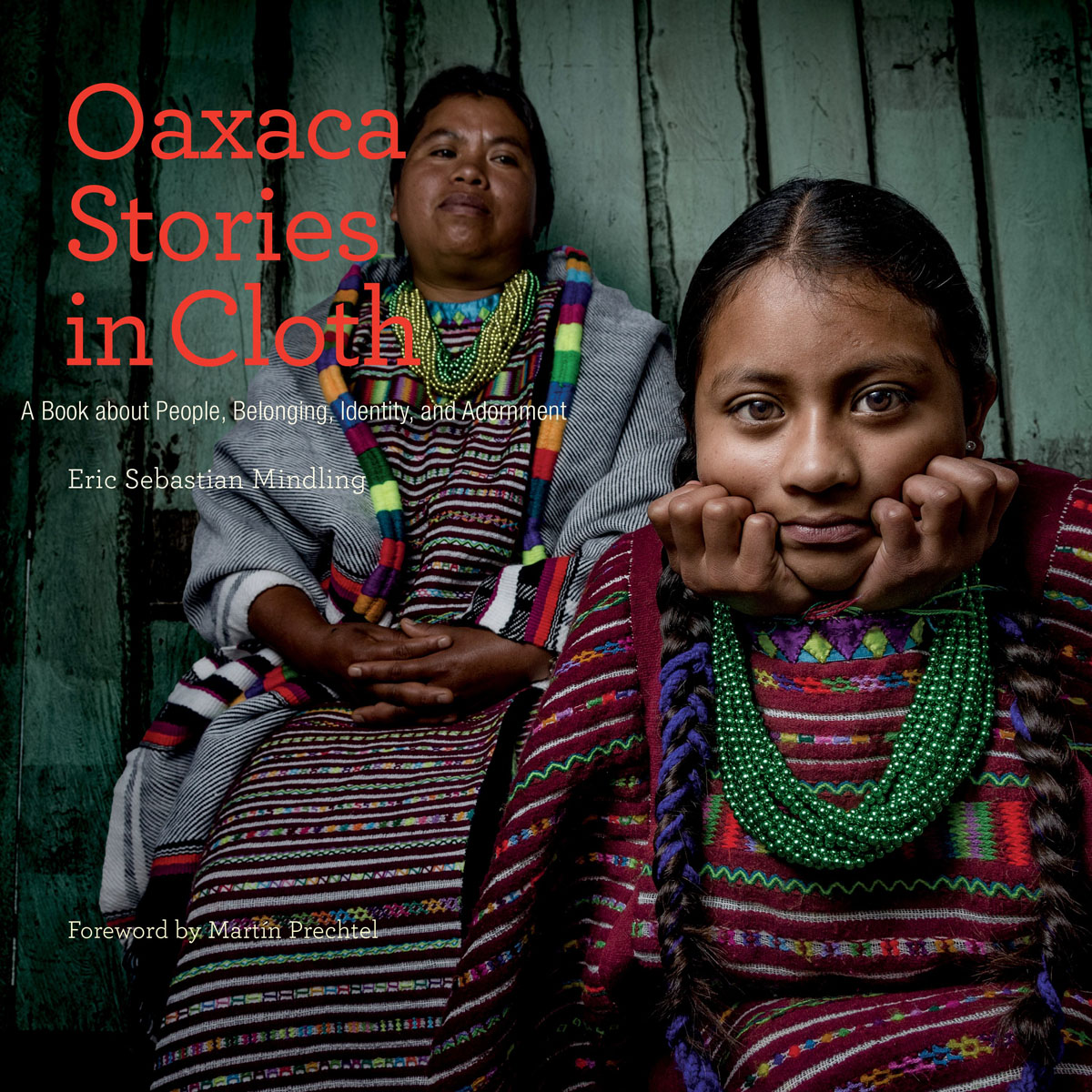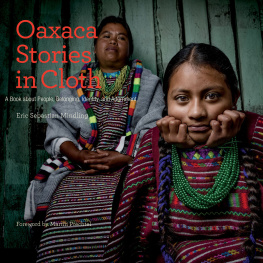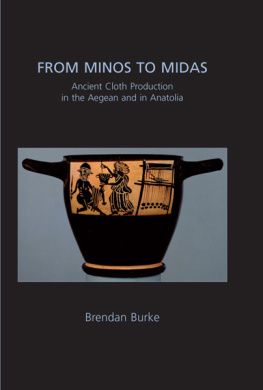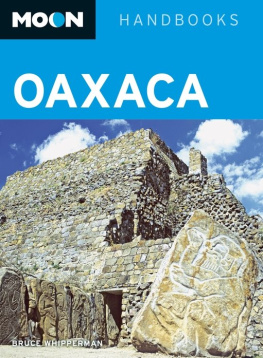
M ORE THAN HALF A MILLION PEOPLE travel from North America to Oaxaca City each year to enjoy its lively celebrations, superb handcrafts, and world-class cuisine. But few have the opportunity to travel the countryside and meet the people who shaped this land and its rich culture. This book takes them there. From seacoast communities to remote mountain villages, Eric Mindling has sought out the few remaining people who follow the traditional ways and wear the traditional dress. His poignant photographs and commentary tell their story.
Oaxaca Stories in Cloth includes more than a hundred sensitive, intimate, full-color portraits of traditional people of the Oaxacan hinterlands who continue to wrap themselves in the clothing that expresses their ancient, living culture. Eric Mindling has captured this vanishing world with artistry and respect, and just in the nick of time. This book offers a window into a vanishing culture where few people have the opportunity to go.
140 photos

Photograph: Marina Guzmn

Dedication
For Asuncin Snchez Garca her children, and grandchildren a family of bottomless heart that gives so much and takes so little. For all the grandmothers and grandfathers of Oaxaca who have chosen to pass the gift of their ancient knowledge forward into tomorrow and to those daughters and sons who carry that gift forth. There is nothing more precious.
Editor: Carol Karasik
Publisher: Linda Ligon
Associate Publisher: Karen Brock
Design: Michael Angelo Signorella
Cartography: Maps for Good, 2016
Eric Sebastian Mindling, 2016
All rights reserved
Cover image: Melda Vasquez Ramirez and Yessica Cruz Vasquez.
Laguna Guadalupe Chicahuaxtla, Oaxaca, Mexico.

306 North Washington Avenue
Loveland, Colorado 80537 USA
Printed in China by Asia Pacific
Library of Congress Control Number 2016938994
Foreword
A LL REAL BEAUTY COMES from the grief we feel for the loss of what we love. Oaxaca Stories in Cloth is undeniably one of the most beautiful books of its species. A book of grief, beauty, and hope.
Both the text and the photos, like a riverbed and water, begin coursing together as a single meandering gurgle, first wailing, then giggling, now still, each tributary story mounting force into a great rushing stream of combined admiration, vitality, sorrow, and most importantly, a waterfall of indigenous hope. Not hope for a superficial cloth deep revival of indigenous language and appearance for tourists, but a percolating re-emergence from the indigenous ground Herself of the place and Her people.
Eric Mindling reminds us he is not an anthropologist or any kind of textile expert, implying of course that he is an artist, that this book is a symphonic love letter in stories and pictures to the losses and resilience of the hills and townspeople of indigenous Oaxaca.
Often artists tend to express only what they feel, with a choleric disregard for how their hate, dismay, dyspepsia, boredom, hipness, or a hundred other kindred moods might victimize the world.
Great artists, on the other hand, make gifts, gifts of grief-derived beauty to liberate, infuse, and above all nourish, not themselves, but what they love. Through their art they try to express their affection by keeping what they love from melting into the blas mediocrity espoused by less courageous humans, who, just struggling for air in the exhaust of civilizations relentless onslaught, seem to lose their imagination.
Since its proliferation, photography has often been a technology notorious for freezing time, for taking, mining, capturing, shooting, bagging, and selling, forcing the observer to objectively and safely look at, say, a tiger or an Indian or an iris, without respect or a care in the world for what the tiger might do, what the Indian thinks, or how our breath might affect the iris. And when were tired of looking at the Indian we simply leave, turn the page, or push a button, and its gone. This is why, I suppose, so many Indigenous people view photography suspiciously.
But Oaxaca Stories in Cloth is part of Eric Mindlings brave, ongoing attempts to make photography into something utterly different: Some of the photos in this book seem to be studying the would-be observer. Instead of capturing his subjects like a safari hunter, the so-called subjects seem to capture the reader.
Because those photos are studying us right now, they do not freeze time, and for that reason they will never be a thing of the past and relegated to a timely demise. They are capable of change by living on in a future gestated form, thereby retaining all the nobility, dignity, humor, and mystery that all life wants and indigenous life has, that makes it so much more vital and dedicated to beauty than the mechanical madness of the modern minds addictive trance.
Other of the photos seem to have not been taken by a photographer at all, but by the Holy Earth herself. Its as if the cooking fire was taking a picture of this beautiful, old-time lady, or a mans hoe was photographing him, or the river photographing the snail squeezer, or the chicken running away from the little girl is photographing her! How can this be?
Indigenous people do not go around trying to be indigenous. A persons teemingly complex indigenousness is visible only from the cultural vacuum of a nonindigenous viewpoint.
One widely accepted unwritten principle is that when indigenous women cease to weave and wear their original clothing their native tongue is soon to be extirpated as well or that as soon as the language begins to fade the clothing soon follows into obscurity. But this is overly simple.
Among a number of groups in indigenous Mesoamerica, there is a deeply held understanding that a peoples indigenosity is a spiritual thing that cannot be killed, nor does it really disappear; it is the people who walk out of it. Their indigenosity is not a thing of the past; it is still hanging around close by, waiting for the people to walk back in.
For them, language, clothing, lifestyle, tools, houses, farming, food, dance, etiquette, and feeding of the deities are all blossoms on the same tree rooted in a time beyond our own. None of these things exist as even remotely separable ingredients, and even if you put them together mechanically the resulting soup cannot duplicate an indigenous identity.
When people start trying to be indigenous by looking and seeming to do indigenous things, that behavior is a desperate last ditch attempt to keep something going thats already gone. Its just the image. This is the insidious, erosive part of civilization for all people, for when we in this world cannot blossom off the integrity of the old root everything becomes an equation to create an image. In the modern age, everything is appearances.
How much more stunning, then, that Eric Mindlings photographs and texts stride along like the left and right leg of the body of stories and are not just entertaining images.
In the end, it is not the land and the way people live in their beloved land that makes them indigenous, but the way the land lives inside the people; the way the land, the animals, the houses, ravines, trees, rivers, weather, food, tools, fire, and history live inside the peoples bodies and dreaming souls that push the woven flowers onto their clothing and the old flowering fire of spoken metaphor into the younger tongue.
Next page










